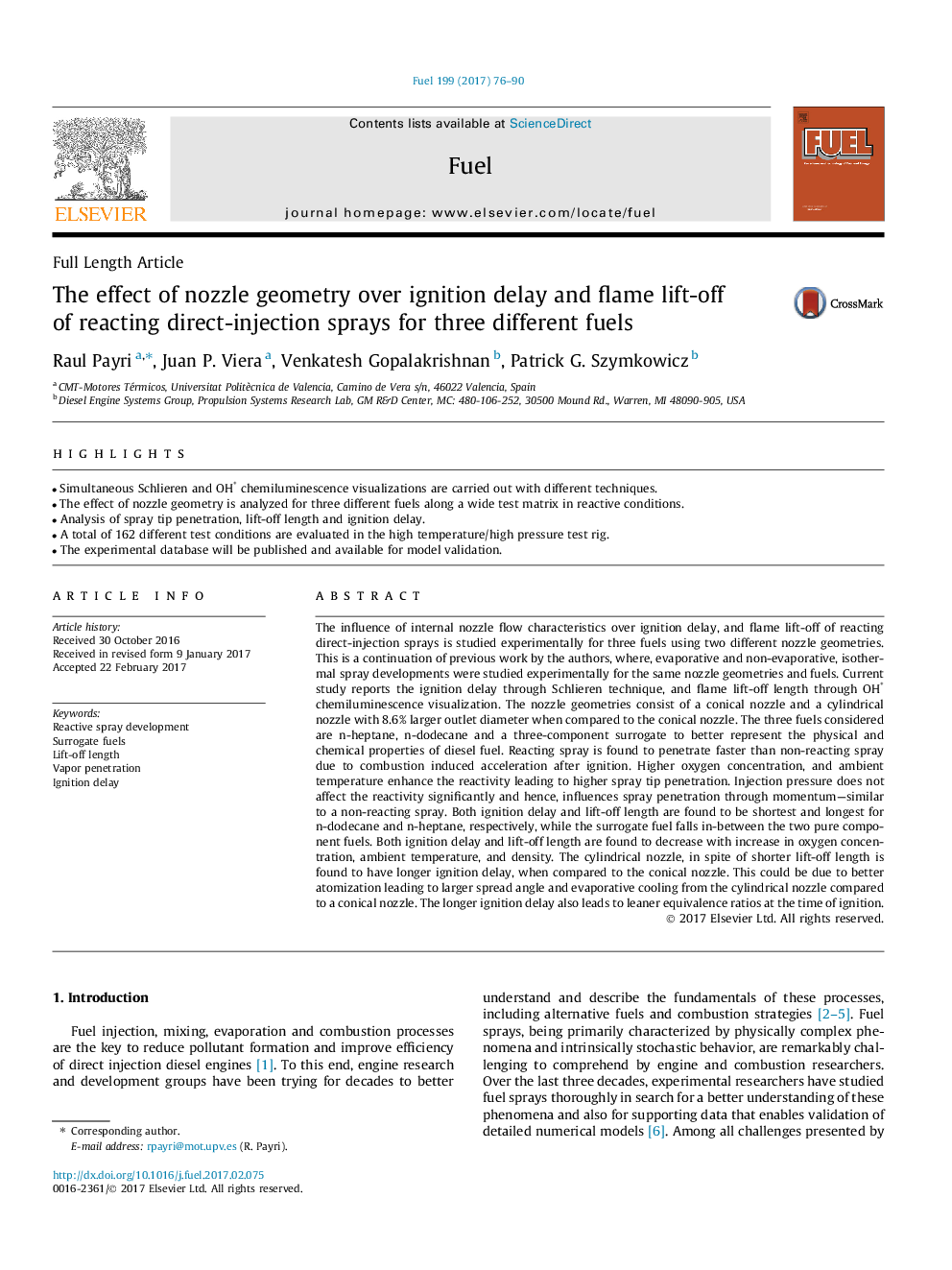| Article ID | Journal | Published Year | Pages | File Type |
|---|---|---|---|---|
| 6474707 | Fuel | 2017 | 15 Pages |
â¢Simultaneous Schlieren and OH* chemiluminescence visualizations are carried out with different techniques.â¢The effect of nozzle geometry is analyzed for three different fuels along a wide test matrix in reactive conditions.â¢Analysis of spray tip penetration, lift-off length and ignition delay.â¢A total of 162 different test conditions are evaluated in the high temperature/high pressure test rig.â¢The experimental database will be published and available for model validation.
The influence of internal nozzle flow characteristics over ignition delay, and flame lift-off of reacting direct-injection sprays is studied experimentally for three fuels using two different nozzle geometries. This is a continuation of previous work by the authors, where, evaporative and non-evaporative, isothermal spray developments were studied experimentally for the same nozzle geometries and fuels. Current study reports the ignition delay through Schlieren technique, and flame lift-off length through OH* chemiluminescence visualization. The nozzle geometries consist of a conical nozzle and a cylindrical nozzle with 8.6% larger outlet diameter when compared to the conical nozzle. The three fuels considered are n-heptane, n-dodecane and a three-component surrogate to better represent the physical and chemical properties of diesel fuel. Reacting spray is found to penetrate faster than non-reacting spray due to combustion induced acceleration after ignition. Higher oxygen concentration, and ambient temperature enhance the reactivity leading to higher spray tip penetration. Injection pressure does not affect the reactivity significantly and hence, influences spray penetration through momentum-similar to a non-reacting spray. Both ignition delay and lift-off length are found to be shortest and longest for n-dodecane and n-heptane, respectively, while the surrogate fuel falls in-between the two pure component fuels. Both ignition delay and lift-off length are found to decrease with increase in oxygen concentration, ambient temperature, and density. The cylindrical nozzle, in spite of shorter lift-off length is found to have longer ignition delay, when compared to the conical nozzle. This could be due to better atomization leading to larger spread angle and evaporative cooling from the cylindrical nozzle compared to a conical nozzle. The longer ignition delay also leads to leaner equivalence ratios at the time of ignition.
